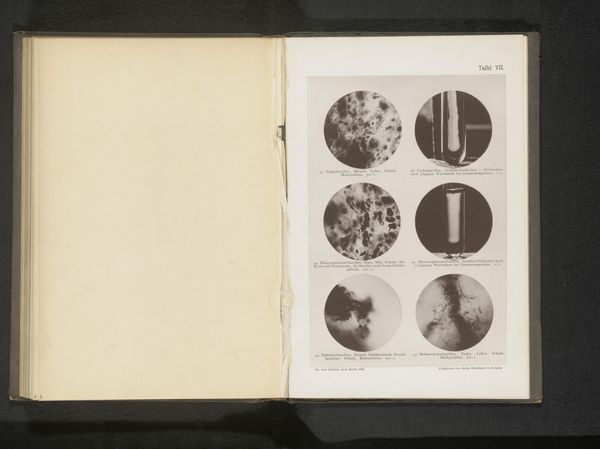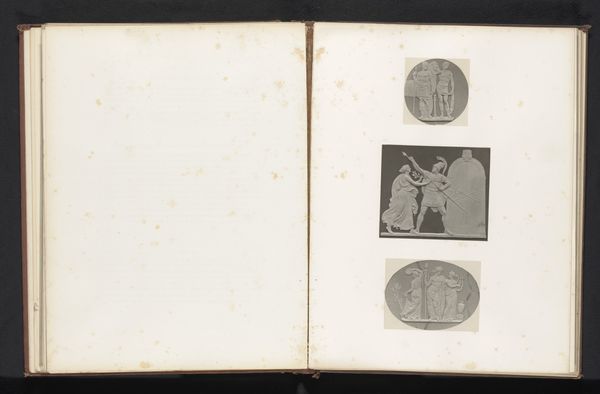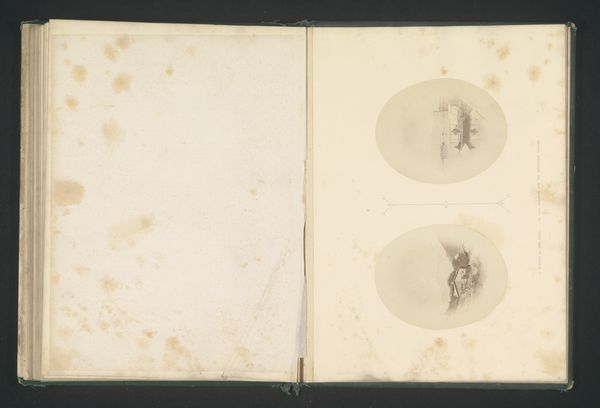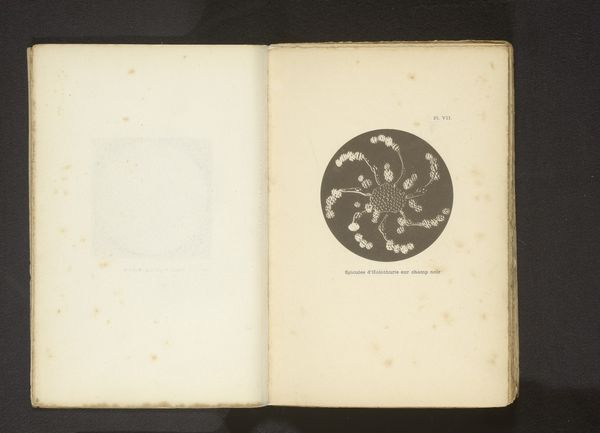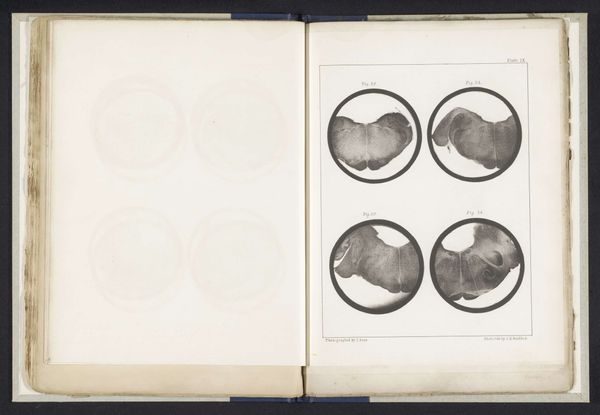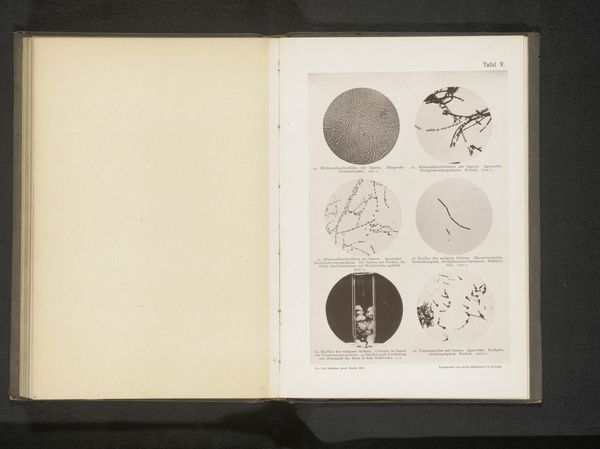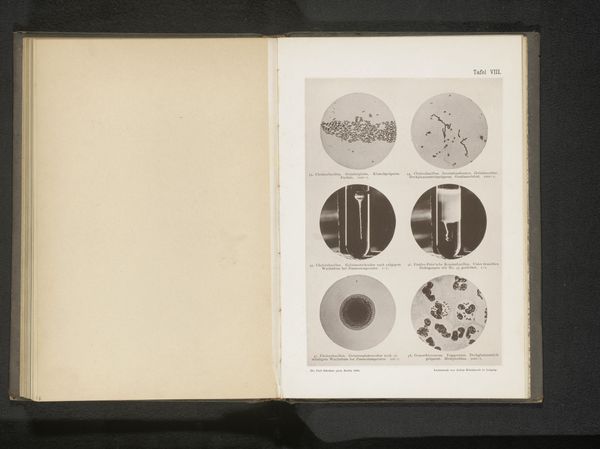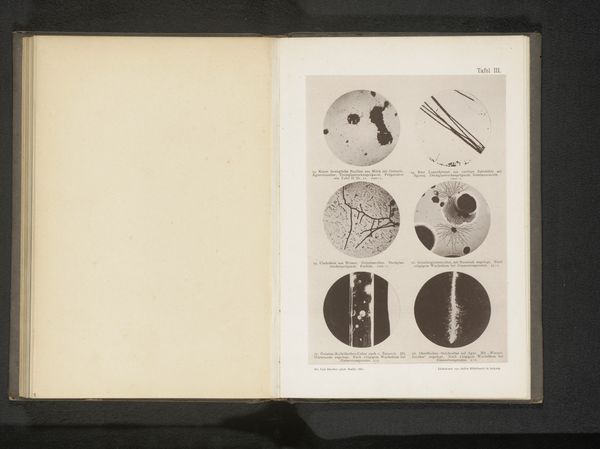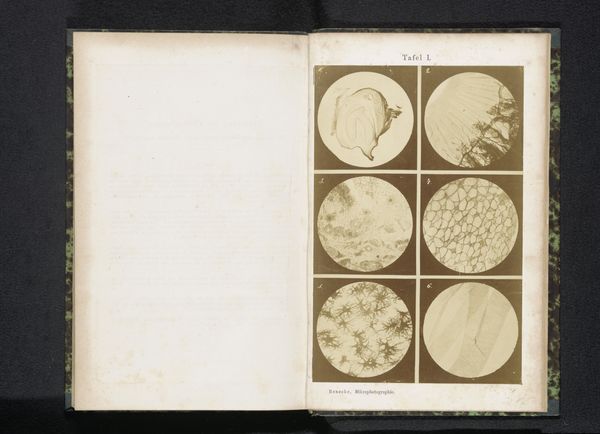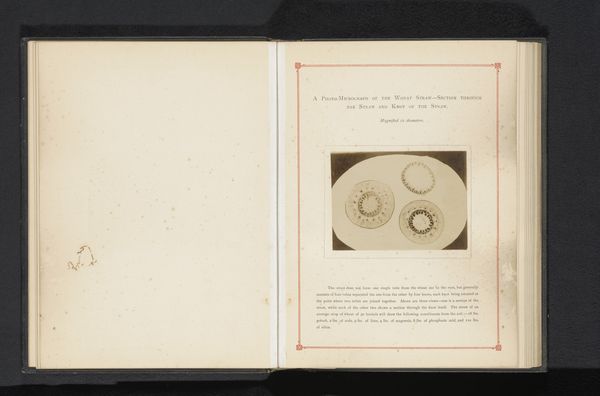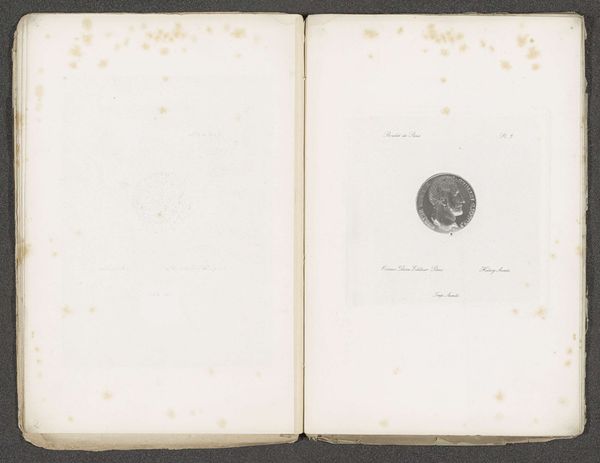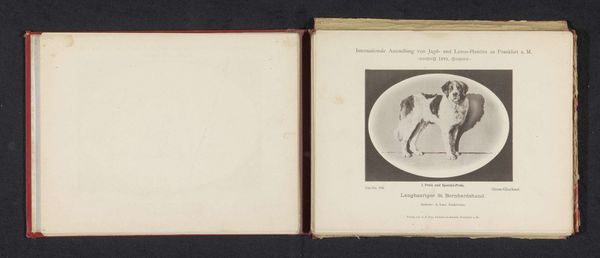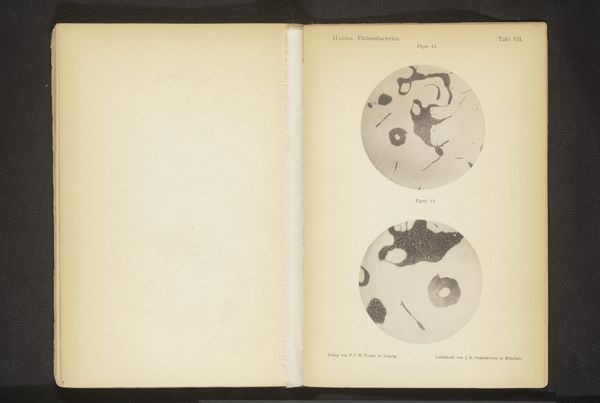
print, photography
# print
#
photography
#
academic-art
#
realism
Dimensions: height 102 mm, width 163 mm
Copyright: Rijks Museum: Open Domain
Curator: Before us is an image titled "Microscopische opnames van Spirillen, Proteus vulgaris en buiktyfus," a photographic print created before 1892 by Emil Zettnow. The image displays several microscopic views of bacteria. Editor: Well, my immediate reaction is that it possesses an austere beauty, despite its subject matter. The contrast between the black background and the almost ethereal white circles is stark. The organisms themselves look like strange, abstract designs. Curator: Indeed. And the choice to document these microorganisms intersects with a period deeply shaped by germ theory and public health crises. Consider how such images shaped public perception, influencing societal anxieties and sanitation reforms. It's not merely an objective study; it also communicates power and control over the unseen. Editor: I see what you mean. However, if we isolate one circle from the rest and purely observe it as a visual form, there is still an intricate network of fine lines and variations in density, almost like miniature galaxies or an abstract expressionist composition, rendered entirely by light and shadow. Curator: Absolutely, and this work also mirrors contemporaneous discussions on the 'monstrous-feminine', that is the construction of femininity in relationship to deviancy and disgust. Think about how microscopic images of diseases associated with women’s bodies at the time served to reinforce medical narratives and further oppress. The work engages power on many levels. Editor: Perhaps. But consider how the repeated circular frames unify each otherwise disparate biological entity. There is a pattern, a rhythm even. One might consider that Zettnow's formal strategy, of presenting the work within the format of the open book, gives these minute, potentially dangerous life forms legibility and perhaps even control. Curator: Your point reminds me that access to information such as that included in the open book wasn't uniformly distributed at that time. A print such as this one highlights social divides, as only people of certain classes could access it, increasing potential discrimination of, and control over, othered bodies. Editor: I can see the tension now between form and intent—how its scientific and possibly even insidious aims still provide a kind of unexpected artistry. Curator: Yes. By exploring it, we also recognize the intertwined nature of art, science, and society, which reflects in contemporary understandings about historical injustices. Editor: A striking blend of objective documentation and subjective aesthetic choice indeed. I'll have to examine more of his work to explore it fully.
Comments
No comments
Be the first to comment and join the conversation on the ultimate creative platform.
